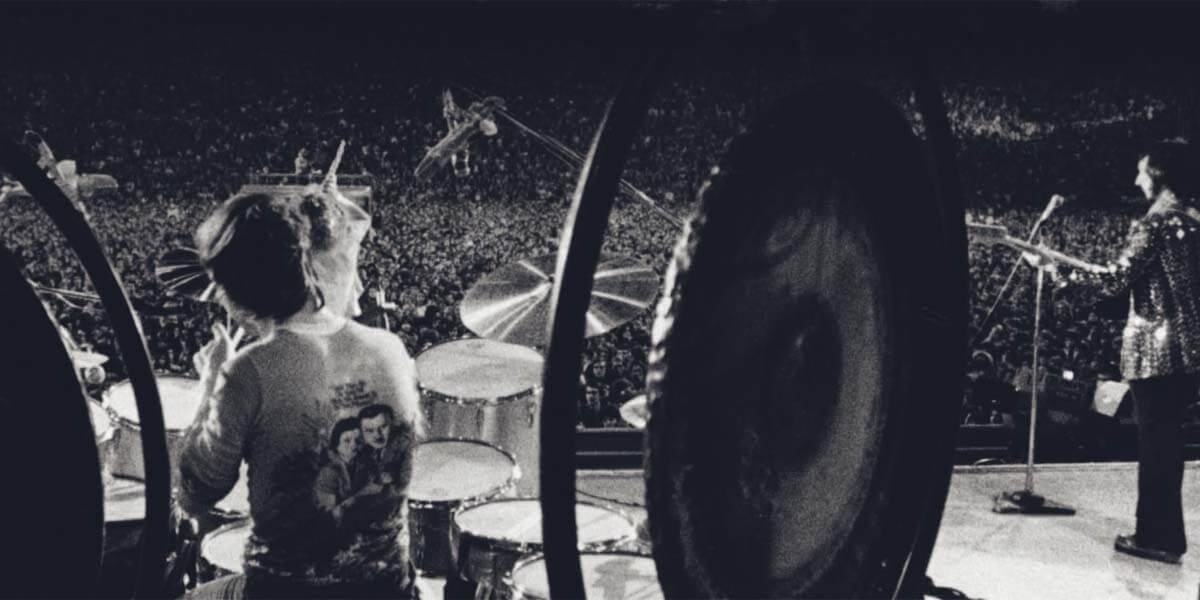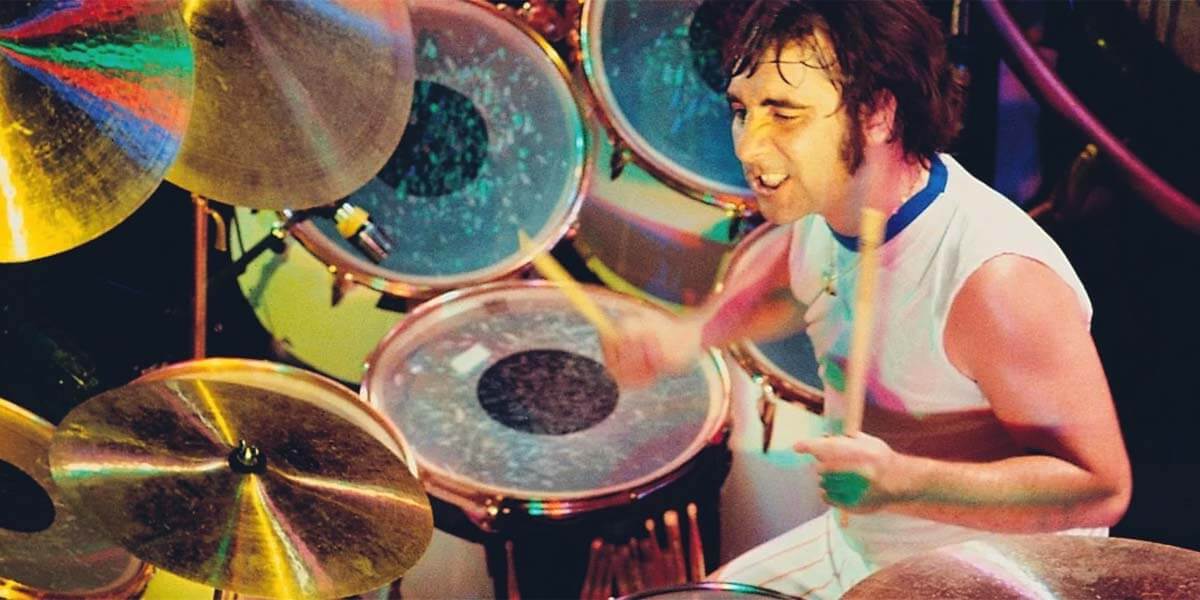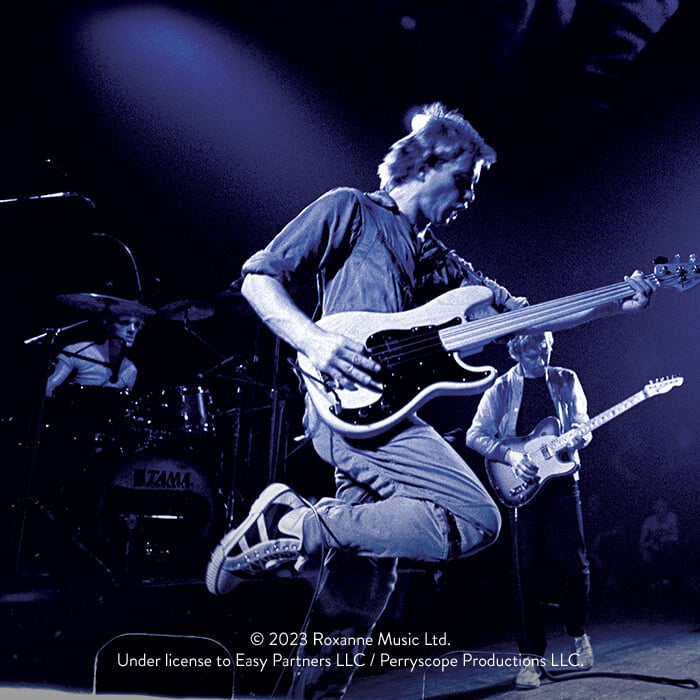It’s not often that a band will span generations, but The Who and their explosive performances have been a part of Britain’s soundtrack for more than 50 years.

From Working-Class Roots to Superstardom
Living the rock and roll dream on the world stage, The Who may have reached the dizzying heights of superstardom, but the story starts with four schoolboys growing up in London. Roger Daltrey, John Entwistle and Pete Townshend were part of the original line-up, playing in Roger’s band, The Detours. The band became The Who before being rebranded The High Numbers and returned to The Who in 1964, complete with drummer Keith Moon.
The band took their rhythm and blues style to the clubs of Shepherd’s Bush in West London, playing in bingo halls and the legendary Goldhawk Club. Their sound soon began to evolve, taking on a mod feel, with songs like ‘My Generation’ winning over Britain’s youth. However, there was tension from the start – Roger Daltrey wanted to stick to their working-class roots, summed up by lyrics like ‘I was born with a plastic spoon in my mouth’ from ‘Substitute’, whilst Pete Townshend was already brimming with ideas and writing unique-sounding tunes.

Knockout Performances
All four individuals were extroverts with distinct talents and attitudes; the combination was explosive, and their chemistry somehow worked. Their on-stage and off-stage antics quickly gained them a reputation for being live and loud, with Pete Townshend’s famous first smashing of a guitar at The Railway Hotel a happy accident that would kickstart their reputation for explosive performances. The destructive end-of-show stage act that evolved created a sound of its own, a surreal discord and an art in itself. The routine was problematic; however, the band’s roadies had several guitars on the go, which often required repairs with glue, string and gaffer tape after shows.
Bigger and Better
After putting the work in to build their fan base during the 1960s, The Who earned top ten success. In 1967, they took their act to the United States, capturing the imagination of America’s youth just as they had done in the United Kingdom. The band found themselves moving from playing bingo halls to touring ever-bigger venues, including arenas, stadiums and appearing in front of more than 400,000 fans at Woodstock in 1969.
Back home in Britain, the band played grounds like Charlton Athletic Football Club’s stadium, and this big stage success demanded ever-bigger performances. The funny and fearless Keith Moon joined Pete Townshend in smashing up the kit, John Entwistle got louder and Roger Daltrey, dressed in fringed jackets, perfected his high-pitched scream and famous microphone twirling.

Iconic Moments
The band continued to innovate, and in 1975 Ken Russell’s film Tommy was released, which was based on the band’s 1969 rock opera album of the same name. On 7 September 1978, tragedy struck when Keith Moon died of an accidental drug overdose. Devastated, the band vowed to continue, recruiting ex–Small Faces drummer Kenney Jones, and their success continued. Huge performances at Wembley Stadium and Madison Square Garden followed and the hit mod film Quadrophenia introduced The Who’s music to an even wider audience.
Making History
For the next two decades, the band’s performances became more intermittent, but they reunited to play moments that made world history, like Live Aid in 1985 and Live 8 in Hyde Park in 2005. The release of Thirty Years of Maximum R&B in 1994, a four-CD box set of greatest hits, proved The Who’s ongoing popularity with existing and new generations of fans.
On 27 June 2002, sadness struck the band for the second time, when John Entwistle died of a heart attack on the eve of the band’s American tour. The band went ahead with the tour with session bass player Pino Palladino and the years to come were littered with shows across the world, including a tour of New Zealand and Australia, which marked the band’s first trip ‘down under’ in 40 years.

Celebrating The Who Through Coinage
Throughout this time, Roger Daltrey and Pete Townshend carried out prolific work for charity. After raising millions for the Teenage Cancer Trust and The Double O Charity, Roger Daltrey was awarded a CBE for his services to music and charity in Her Late Majesty Queen Elizabeth II’s New Year Honours List. After more than 50 years, The Who are still making and performing music, joined by Pete Townshend’s brother, Simon Townshend, and members of musical royalty like Zak Starkey, the son of Beatles legend Ringo Starr. It seems lyrics like ‘I hope I die before I get old’ refer to the band’s youthful attitude and not their age.
As part of The Royal Mint’s Music Legends Collection, Henry Gray designed a reverse that beautifully illustrates what The Who radiates as a band. It features a stylised Rickenbacker guitar as a pinball table being smashed through a speaker stack, complete with mod roundel. The coin is available in a number of editions, including precious metal Proof editions alongside a standard Brilliant Uncirculated issue and a colour-printed Brilliant Uncirculated edition.
Be inspired

CELEBRATING THE LIFE AND LEGACY OF GEORGE MICHAEL
Discover The Legacy
MEET THE MAKER OF THE GEORGE MICHAEL COIN
Discover The Design Story




